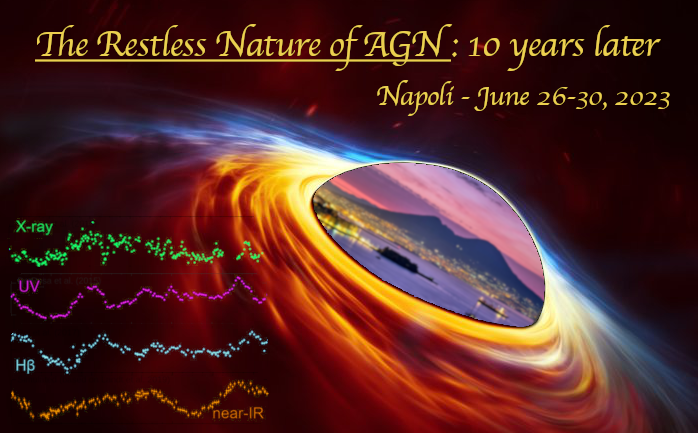Speaker
Description
We use data from the Panoramic Survey Telescope and Rapid Response System 1 Survey (Pan-STARRS1, PS1) to extend the Sloan Digital Sky Survey (SDSS) Stripe 82 quasar light curves. Combining PS1 and SDSS light curves provides a 15 yr baseline for 9248 quasars–five years longer than prior studies that used only SDSS. We fit the light curves with the damped random walk (DRW) model – a statistical description of their variability. We correlate the resulting DRW model parameters (asymptotic variability amplitude, and characteristic timescale), with quasar physical properties (black hole mass, bolometric luminosity, and redshift). We also make predictions for the fidelity of DRW model parameter retrieval when light curves will be further extended with Zwicky Transient Facility (ZTF) and the Rubin Observatory Legacy Survey of Space and Time (LSST) data. Finally, we show how updated DRW parameters offer an independent method of discovering changing-look quasar candidates (CLQSOs). The candidates are outliers in terms of differences in magnitude, and scatter between SDSS and PS1 segments. We identify 40 objects (35 newly reported) exhibiting a tenfold increase in variability timescale between SDSS and SDSS - PS1 data. An accompanying large (over 0.5 mag) change in brightness is characteristic of CLQSOs. We summarize the results of a recent program of spectroscopic follow-up of select CLQSO candidates carried out at the Apache Point Observatory.

